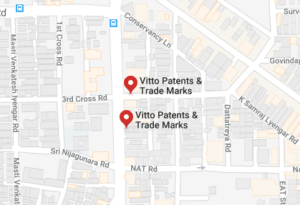DESIGNS
GENERAL INFORMATION
The Designs Act, 2000, is aimed at protecting Designs, which serve the purpose of visual appeal. In order to obtain a Design Registration of an article, the article should be unique in Shape, Configuration, Surface Pattern or any of these, but does not include the principle of construction and shall not apply to a mere mechanical device.
Thus, a design is for the ornamental or aesthetic aspect of the article. It may be for the three dimensional features such as the shape of the article or for two-dimensional features, such as the surface pattern of the article. The grant is for a specific period of 15 years from the date of application, before it passes on to the public regime, after which it can be freely used by any person. The idea to get a design registration is to exploit the commercial value of a product and increase its marketability over this specific period. Designs are applied over a variety of products available in the Industry, from a pen to a car. By virtue of a Design Registration, the owner gets an exclusivity over the said Design and he can sue persons indulged in unauthorized copying or imitation of design by third parties. This helps him in getting a fair return on his investment in the said article, encourages creativity and moreover promotes aesthetically attractive products in the market. Eg: Mixer Grinders / Wet Grinders of various shapes available in the market could be protected under the Designs Act to prevent infringement of a registered design.
A registered Design is valid for a period of 15 years from the Date of Application, which includes one renewal after a period of ten years. After a period of 15 years,
it passes on to the public regime, where anybody can use the Design. Thus, a registered Design Owner has to commercially exploit this period of 15 years and reap the benefits.
DESIGN REGISTRATION PROCESS
Following are the various steps involved:
Step 1 – Finding out whether any registration already exists
The Designs office can assist to search whether the design has been previously registered. If the registration number is known, Form No – 6 should be filed along with the prescribed fees. If the representation of the article or the specimen of the article is filed Form No – 7 along with the prescribed fees is required.
Step 2 – Preparing a representation of the design
A representation is the exact representation of the article on which the design has been applied. It should be prepared on white A4 size paper of durable quality. Details of the design and applicant are to be indicated clearly.
Step 3 – Identifying the class of design
Designs are required to be categorized in separate classes in order to provide for systematic registration. An internationally accepted classification of Industrial Designs based upon the function of the article is required. The class and sub-class should be mentioned in the application. There are 32 classes and most of the classes are further divided into sub-classes.
Step 4 – Providing a statement of novelty
A statement of novelty should be included on the representation of a design as per the Act in order to specify the claim. This will enable speedier examination and provide a more specific protection. The claim will protect the overall visual appearance of the design as described in the representation of drawing.
Step 5 – Including a disclaimer
If the ornamental pattern on an article is likely to be confused with a trade mark, suggests any mechanical action or contains words, letters, numerals, etc., a disclaimer should be included in the representation.
Step 6 – Claiming a priority date
If protection of the design in convention countries or countries which are members of inter-governmental organizations has been applied, registration of the design citing a priority date in India can be claimed. This is the date of filing of the application in any of such countries provided the application is made in India within six months.
Step 7 – Determining the fee to be paid
Applications are to be accompanied by the required fee through cheque or draft payable at Kolkata or in cash (if filed in Design Office, Kolkata).
Step 8 – Ensuring all enclosures are attached
An application is to be filed only after ensuring that all enclosures and fee in the required numbers are attached. Applications can be filed in either the Design Office in Kolkata or the branch offices of the Patent office in Delhi, Mumbai or Chennai.
Step 9 – Complying with objections (if any)
If the Design Office seeks additional information or clarifications after preliminary examination, the relevant details are to be provided.
Step 10 – Providing full details
While filing an application for design, all contact details and addresses are to be clearly and legibly filled in.
INTERNATIONAL DESIGN REGISTRATION
Paris Convention for the protection of Industrial Property, was one of the first instruments to bring harmony between patent regimes of various jurisdictions.
The substantive provision of the convention fall into three main categories:
- National Treatment
- Right of Priority
- Common Rules
The works of the authors who are nationals of one contracting party shall be given the same protection that is accorded to the nationals in each other contracting parties.
This is the principle of national treatment. The protection accorded to the copyright does not depend upon fulfillment of any formality. This non-formality rule is called as the principle of ‘automatic’ protection. The copyright protection given for a work in any contracting party is independent of the protection in the country of origin of the work. This is known as the principle of independence of protection.



